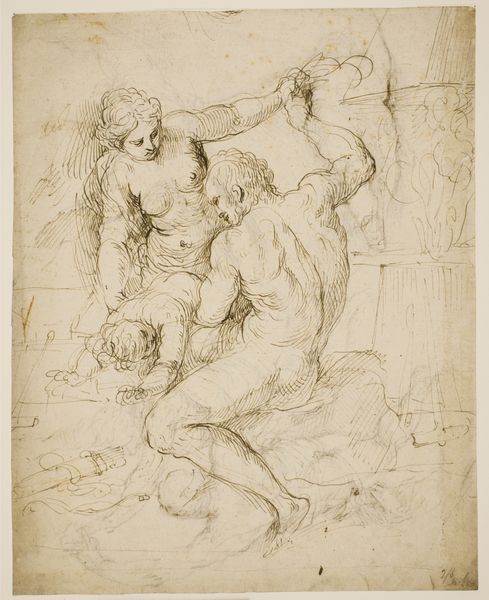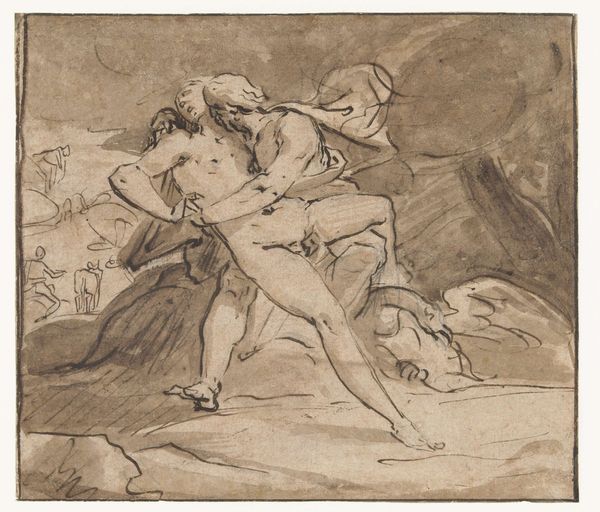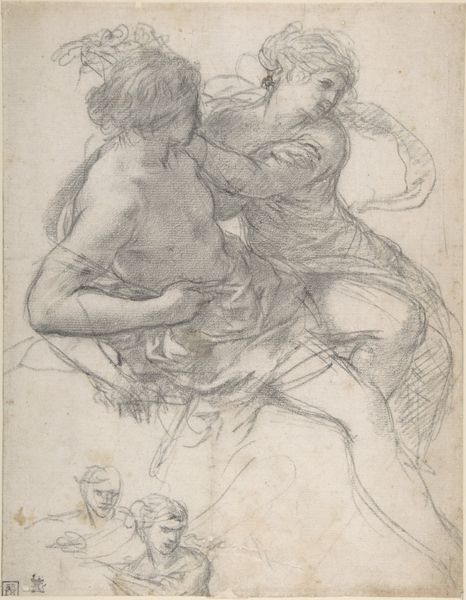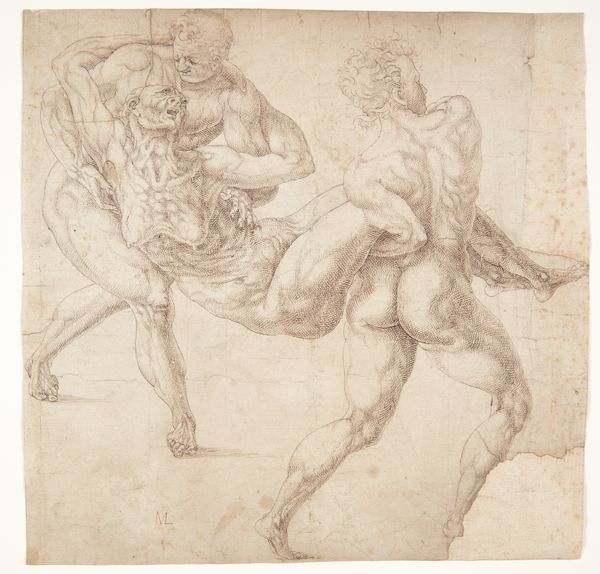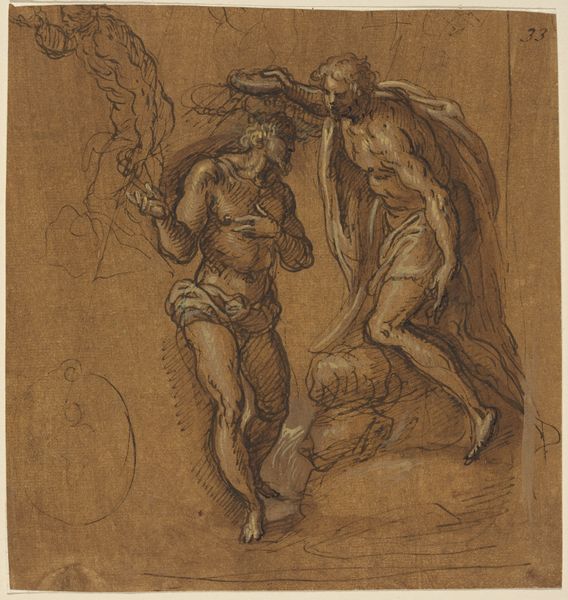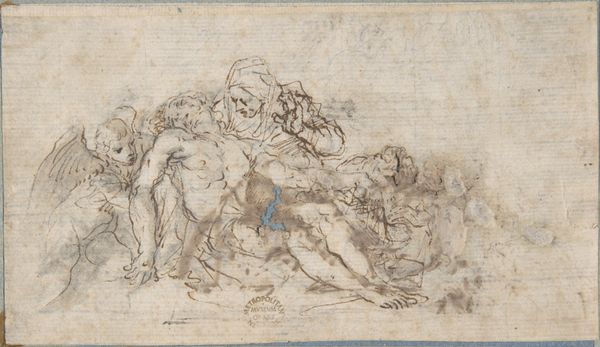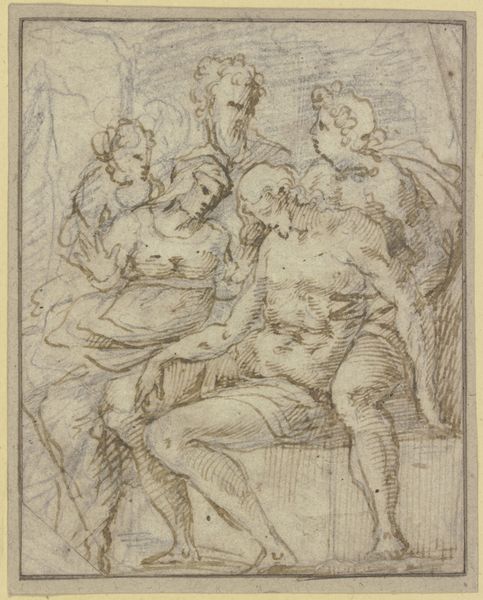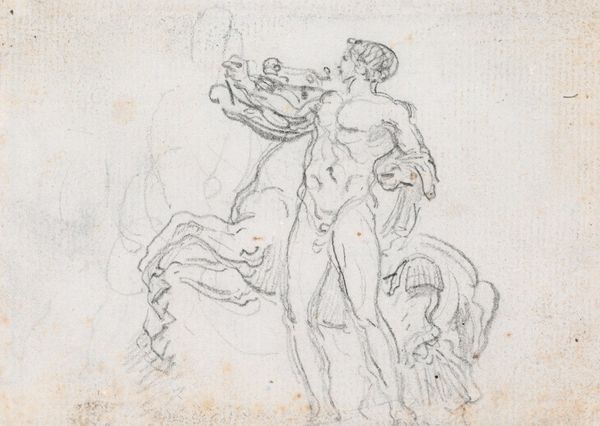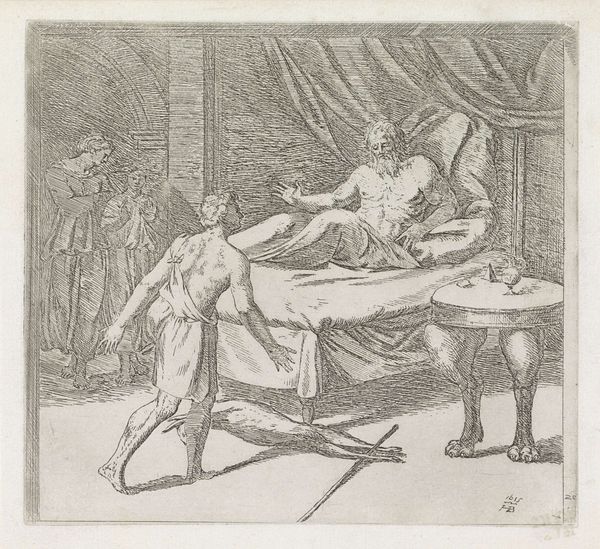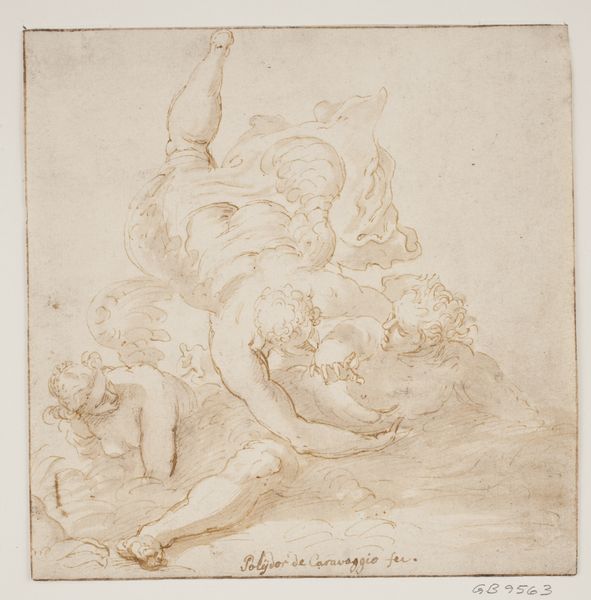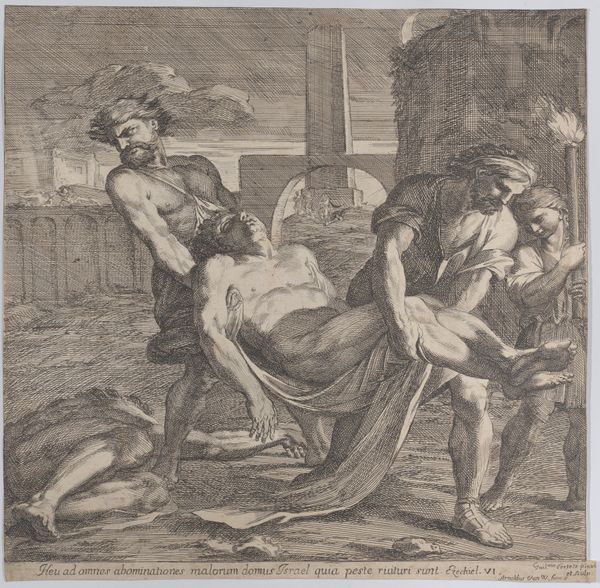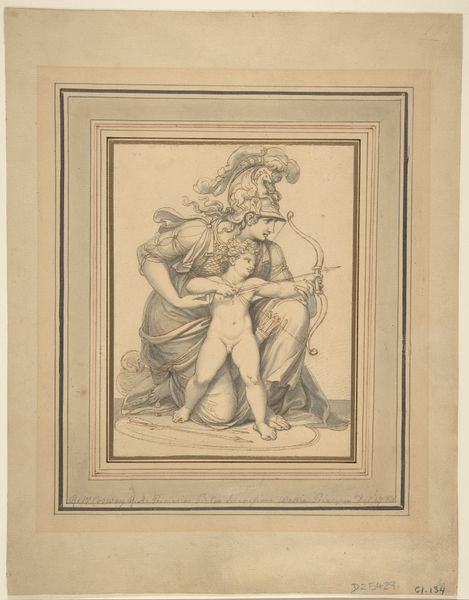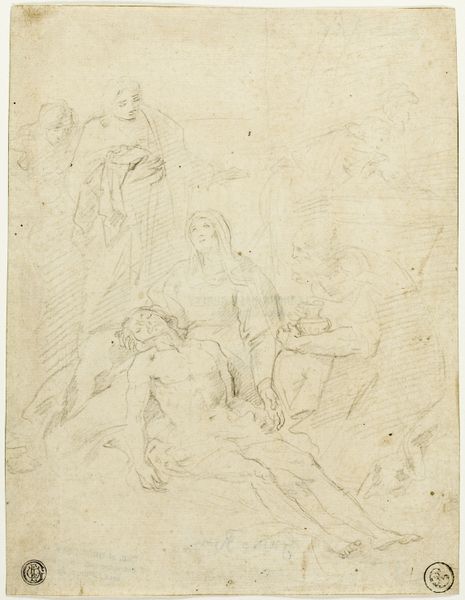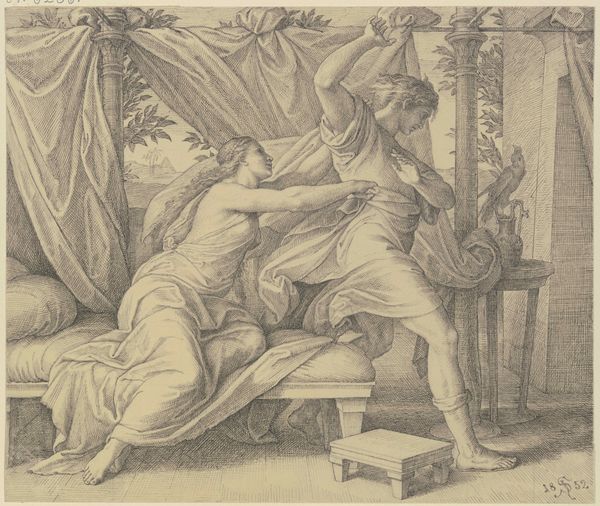
Saint Abdon and Saint Sennen Bury Christian Martyrs 1653 - 1657
0:00
0:00
drawing, paper, pencil
#
portrait
#
drawing
#
narrative-art
#
figuration
#
paper
#
pencil
#
history-painting
#
italian-renaissance
Dimensions: 9 11/16 x 9 3/4 in. (24.61 x 24.77 cm) (sheet)22 x 16 in. (55.88 x 40.64 cm) (mount)
Copyright: Public Domain
Editor: This is "Saint Abdon and Saint Sennen Bury Christian Martyrs," a pencil on paper drawing by Guglielmo Cortese, created between 1653 and 1657. The figures seem caught in a moment of somber action, yet there's a grace in the way their bodies are rendered. How do you interpret this work, particularly considering the subject matter? Curator: It's a compelling piece, isn’t it? The act of burial, especially in this context of religious martyrdom, brings forth complex narratives of power, resistance, and commemoration. Consider how Cortese chooses to depict the saints, not just as pious figures but as active agents in a narrative of defiance against persecution. How does the act of giving a proper burial, typically an act of respect and mourning, transform into a political statement under oppressive conditions? Editor: That's a fascinating point. I hadn't considered the defiance aspect so directly. Does the artist's choice to render it in pencil on paper affect how we perceive that defiance, compared to, say, a grand oil painting? Curator: Absolutely. The intimacy of the medium invites a different kind of engagement. Pencil on paper can suggest vulnerability, immediacy – like a sketch made in secret. Does that perceived fragility perhaps amplify the quiet bravery of Abdon and Sennen's actions, turning their act of care into a whispered rebellion? What might this imply about how art functions as a witness and a form of resistance in periods of upheaval? Editor: It really reframes how I see the piece, it feels less like a distant historical scene and more like a quiet act of protest, relevant even now. Thank you! Curator: Precisely! Seeing it in those terms highlights the enduring power of such narratives, challenging us to reflect on how similar acts of care and resistance continue to shape our world.
Comments
minneapolisinstituteofart almost 2 years ago
⋮
Inscribed with the name "Giacinto Brandi," this drawing has long been considered the work of that 17th century Roman artist. Thanks to the careful research of the Brandi scholar Guendalina Serafinelli, we now know that this drawing was executed by Guglielmo Cortese (born Guillaume Cortois), a French artist active in Rome in the same years as Brandi. It is a preparatory sketch for Cortese's St. Abdon and St. Sennen Bury Christian Martyrs fresco in the church of San Marco in Rome. Cortese executed a series of frescoes for Niccolo Sagrèdo, Venetian ambassador to the Holy See, who undertook a major redecorating campaign in San Marco, the national Venetian church in Rome, between 1653 and 1657. A preliminary compositional sketch, this drawing shows the artist's thought process as he works out the placement for the arms and feet of the figures. With an extraordinary economy of line—just a few quickly drawn chalk strokes—Cortese masterfully describes the musculature and drapery of the figures.
Join the conversation
Join millions of artists and users on Artera today and experience the ultimate creative platform.
